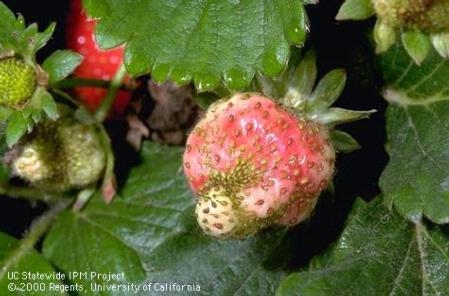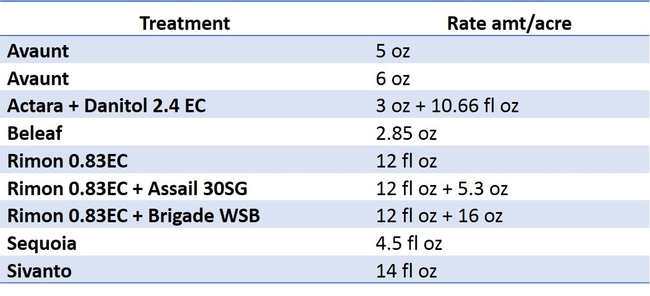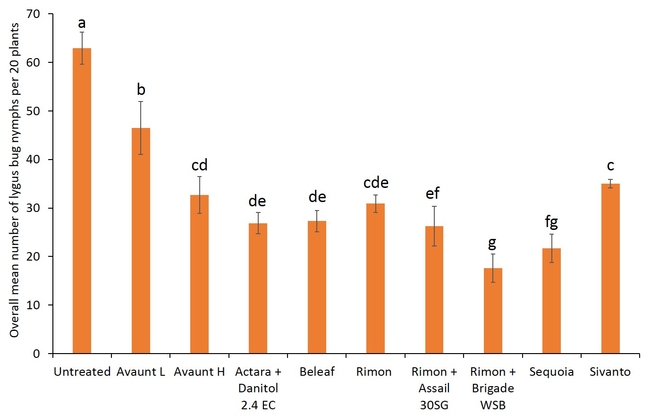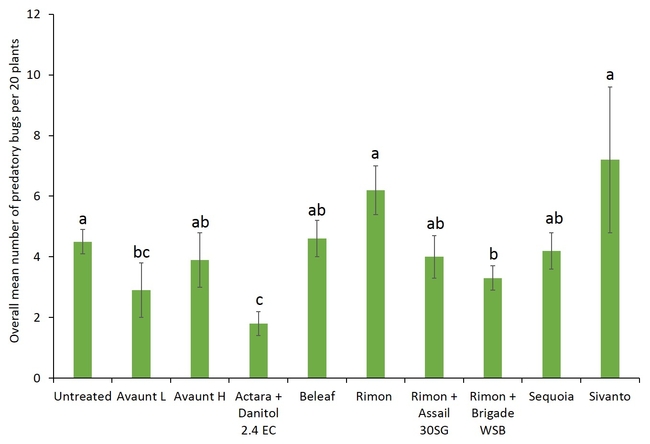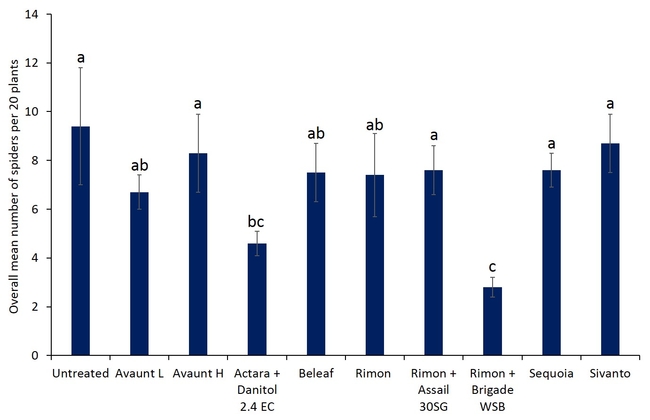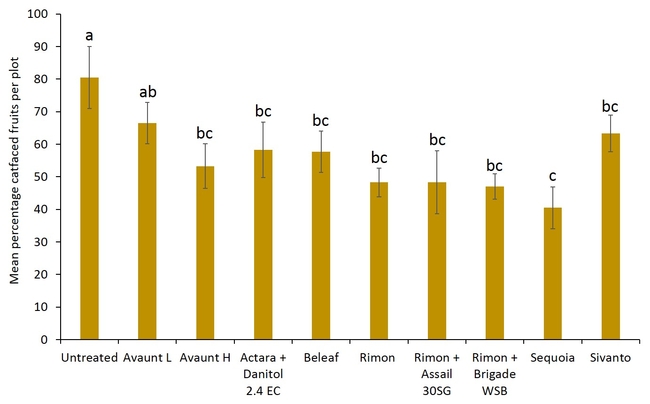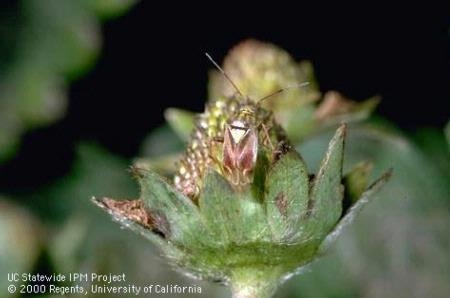Lygus bug (Lygus hesperus) (Fig. 1) is a major pest of strawberry in the Central Coast. Lygus bug populations develop on weed hosts surrounding the strawberry fields such as wild radish, common groundsel, lupines, and mustards (Zalom et al. 2012). Time to time, adults migrate into the strawberry fields and lay eggs. Eggs hatch, and molt through five nymphal stages before molting into adults. Lygus bug feeding on the developing embryos affects the normal development of tissues surrounding the embryo (Handley and Pollard 1993) and affected fruits are misshapen often referred as “catfaced fruit” (Fig. 2) which are deemed unmarketable. Although both nymphs and adults can cause catface injury, nymphs are considered more destructive than adults. The young fruits up to ~10 days after petal fall are considered vulnerable to economic injury from lygus bug feeding (Zalom et al. 2012).
Chemical control continues to be an effective tool for lygus bug control and growers are always seeking effective and softer insecticides for its control. A replicated trial comparing the efficacy of insecticide treatments against lygus bug was conducted in first-year strawberry ‘San Andreas' in Watsonville, CA in 2016. The details on insecticide products and rates used in the trial are shown in Table 1. The insecticides were applied twice at 10 day interval using commercial tractor mounted sprayer. The water volume used for both the applications was 150 gal per acre and was applied at 140 psi. Dyne-Amic (surfactant) was added at 0.25% v/v to all the treatments. Insect samples were collected using regular sized Rubbermaid container by hitting 20 flowering strawberry plants with lid. In addition, 60 fruits were sampled from each plot to determine catface injury.
Pre-count sample did not show any difference in number of adult and nymphal lygus bugs among treatments (Figs. 3 and 4). Overall, all the insecticide treatments reduced the number of lygus bug adults and nymphs compared with untreated plants. The combination treatments using pyrethroid insecticides such as Danitol and Brigade suppressed lygus bugs and general predators such as bigeyed bug, minute pirate bug, and damsel bug as well as spiders (Figs. 5-8). Data show that reduced-risk insecticides, Rimon and Beleaf suppressed lygus bug nymphs as well. Sequoia, not yet registered on strawberry, provided a decent lygus bug control. Sivanto initially provided a good suppression of adults and nymphs but could not adequately sustain the control for more than a week. Two rates of Avaunt (unregistered insecticide on strawberry) was included in this experiment and were comparable to other effective insecticides in this experiment.
Insecticide use certainly reduced catface injury on strawberry fruit. Number of fruits with catface injury was lower in all the insecticide treated plants than untreated except the lower rate of Avaunt (Fig. 9). Catface injury on fruits treated with Sequoia was lower than untreated but not different from other insecticides (except lower rate of Avaunt).
References
Handley, D. T., and J. E. Pollard. 1993. Microscopic examination of tarnished plant bug (Heteroptera: Miridae) feeding damage to strawberry. J. Econ. Entomol. 86: 505-510.
Zalom, F. G., M. P. Bolda, S. K. Dara, and S. Joseph. 2012. Strawberry: Lygus bug. UC Pest Management Guidelines, UC ANR Publication 3468. http://www.ipm.ucdavis.edu/PMG/r734300111.html
